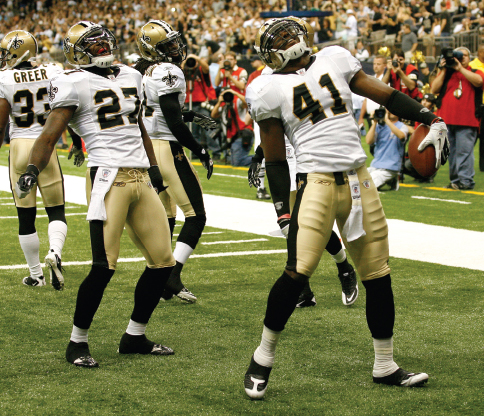7.4 FUNCTIONS OF NONVERBAL COMMUNICATION
Printed Page 231
Functions of Nonverbal Communication
How we use nonverbal behaviors in communication
It was 4th and 24 with 4 minutes to go in the 4th quarter and the Chicago Bears were down by 17 points to the New Orleans Saints.3 As Bears quarterback Jay Cutler dropped back to pass, Saints defenders Roman Harper and Malcolm Jenkins converged from opposite sides, and pounded him to the turf—turning the ball back to the Saints, and ensuring victory. Leaping up, the two defensive backs began to move about in a bizarre fashion. They leaned back, looked skyward, let their arms dangle loosely, and began shuffling and flailing about. What were they doing? Why were they doing it? Harper and Jenkins were doing the “Bernie Dance,” from the ISA song “Movin’ Like Berney” and the film Weekend at Bernie’s. In the movie (and its sequel), two hapless insurance agents try to convince people that their dead boss Bernie is actually alive, even to the point of making his corpse dance. Hence, the “Bernie Dance.” Of course, Harper and Jenkins weren’t “moving like Bernie” just to honor a dance fad. Instead, they were using their nonverbal communication to serve several different functions, including rousing their hometown crowd in celebration and expressing their joy at having sacked Cutler and (in effect) ending the game.
Like Harper and Jenkins, we use nonverbal communication for many different purposes in our daily lives. Within interpersonal encounters, nonverbal communication serves five functions: it conveys meanings, expresses emotion, presents ourselves to others, helps manage interactions, and defines relationships (Argyle, 1969).
